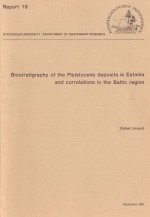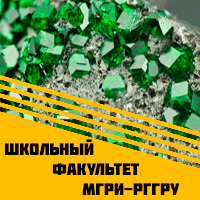Добрый день, Коллеги. Важное сообщение, просьба принять участие. Музей Ферсмана ищет помощь для реставрационных работ в помещении. Подробности по ссылке
Biostratigraphy of the Pleistocene deposits in Estonia and correlations in the Baltic region / Биостратиграфия плейстоценовых отложений Эстонии и их корреляции в Балтийском регионе
Palynological methods are extensively used in Quaternary biostratigraphical investigations. The application of palynology in Pleistocene stratigraphy, including glacial deposits, is connected with some special problems. Intensive geological processes affecting the formation of autochthonous pollen spectra and the break up, rebedding and transport of pollen-bearing sediments complicates the interpretation of the stratigraphy considerably. Therefore attention has been focused on methodical problems.
For the purpose of distinguishing the main disturbing factors in the formation of pollen spectra, different ways of pollen incorporation into the sediment will be discussed. Redeposited interglacial pollen and spores, incorporated into glacial deposits have shown themselves to be the most misleading phenomenon, causing non-compatability between pollen spectra and vegetation composition. Ways in which such pollen are eliminated will be presented. The same redeposited pollen, however, also provides information which may be used for indirect dating of different till beds and interstadial strata. The elucidation of allochthonous or autochthonous bedding of interglacial deposits as marker horizons helps to arrange the beds investigated in their correct chronological order. Such an improved palynological method enables not only the investigation but also the correlation of different kinds of Pleistocene The main aim of the present paper is the biostratigraphical subdivision of the Pleistocene deposits in Estonia and their correlation with the corresponding strata in the neighbouring countries. For a long time such stratigraphical investigations were complicated by the occurrence of interglacial erratics (redeposited lumps of organogenic sediments) and redeposited pollen and spores. The stratigraphical reconstructions, based on these erratics, have led to the allocation of an erroneous younger age to the interglacial deposits and also, therefore, erroneously older age to tills and intermorainic strata. The
presence of redeposited interglacial pollen in younger intermorainic strata, caused an unjustified stratigraphical ranking of interstadials as interglacials. The use of improved palynological methods, together with detailed lithostratigraphical investigations, has helped to solve some of these controversial questions. As a result, only two interglacials - the Eemian and the Holsteinian - have been established in Estonia. The majority of the periglacial and interstadial deposits studied belong to the Weichselian Glaciation. A new stratigraphical scheme for the Estonian Pleistocene deposits enables a more precise correlation with other sequences investigated in the Baltic region <...>




